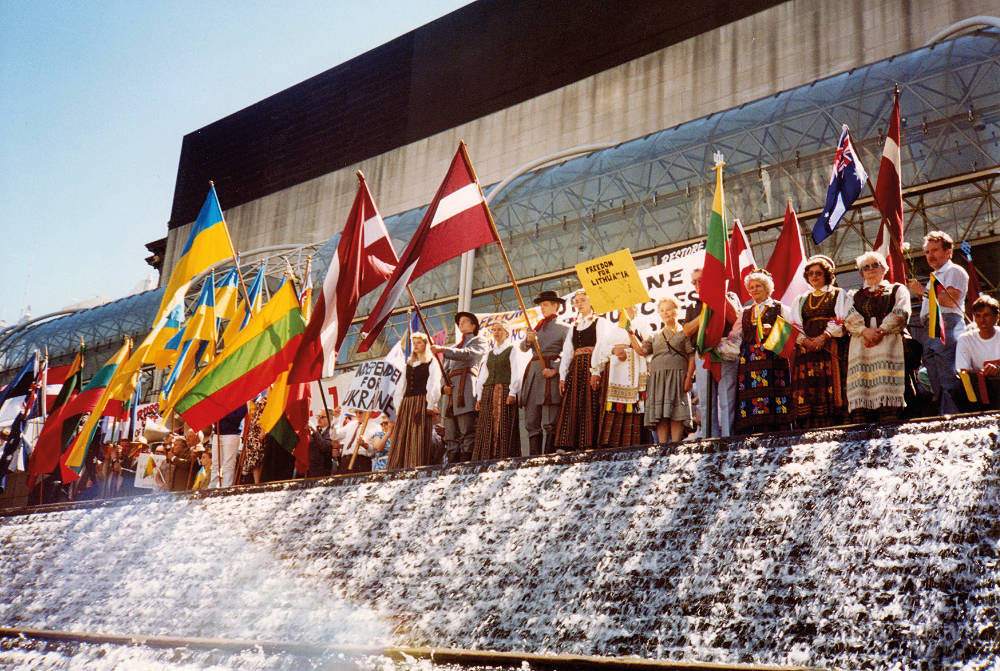- Latvian political activity in exile
- Use your imagination
- Create a catchy slogan
- Gather like-minded people
- Disturb societal norms
- Act quickly
- Get attention from the press
- Protest day-to-day
- Be prepared for legal consequences
- Teach the young
- What to wear
- Remain vigilant until your goal is achieved
- __________________
- About the exhibition
LATVIAN POLITICAL ACTIVITY IN EXILE
After the Second World War, Latvian exile communities formed in many countries around the world. The main goal of exiles in their new homes was to maintain and defend the idea of an independent Republic of Latvia.
Over time, exile community activities developed and changed, generally in two directions:
First, direct political lobbying, including meetings and correspondence with government officials of host countries, politicians, and international organisations; letter- and postcard-writing campaigns; and consulting government authorities.
Second, public information campaigns to inform local society about the occupation of Latvia, creating wide public support for the Baltic states by preparing press publications, holding public lectures, and organising political demonstrations.
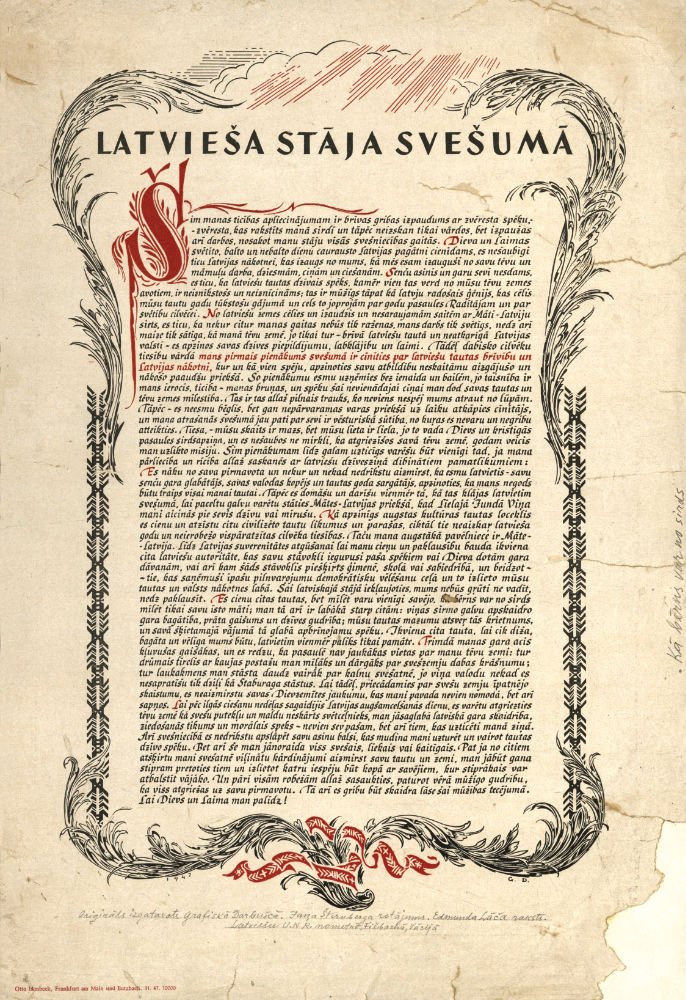
Donated to Latvians Abroad Museum and Research Centre by Sarma Muižniece
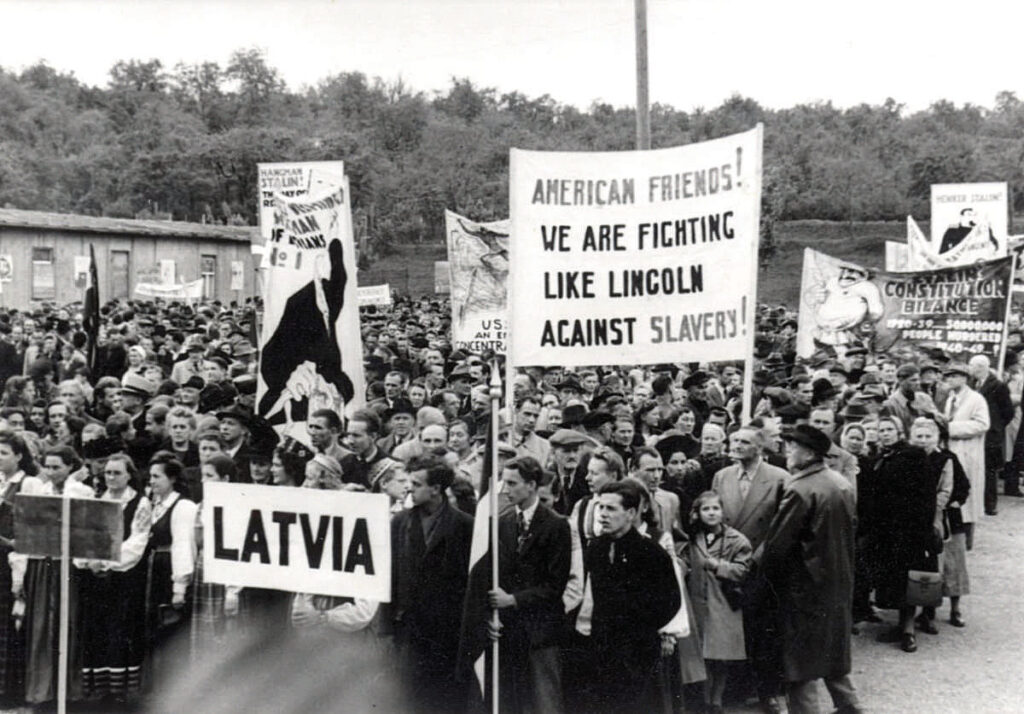
Donated to Latvians Abroad Museum and Research Centre by Valdis Briedis
DEMONSTRATIONS AND PROTESTS IN THE 1950s-1960s
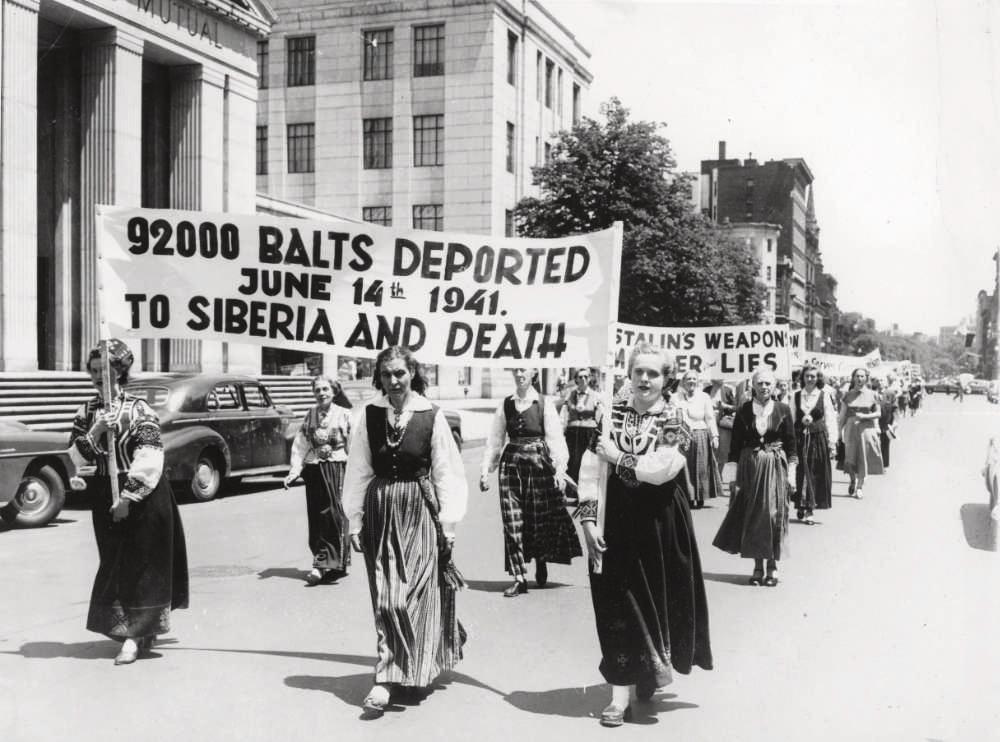
Donated to Latvians Abroad Museum and Research Centre by Sarma Muižnieks-Liepiņš
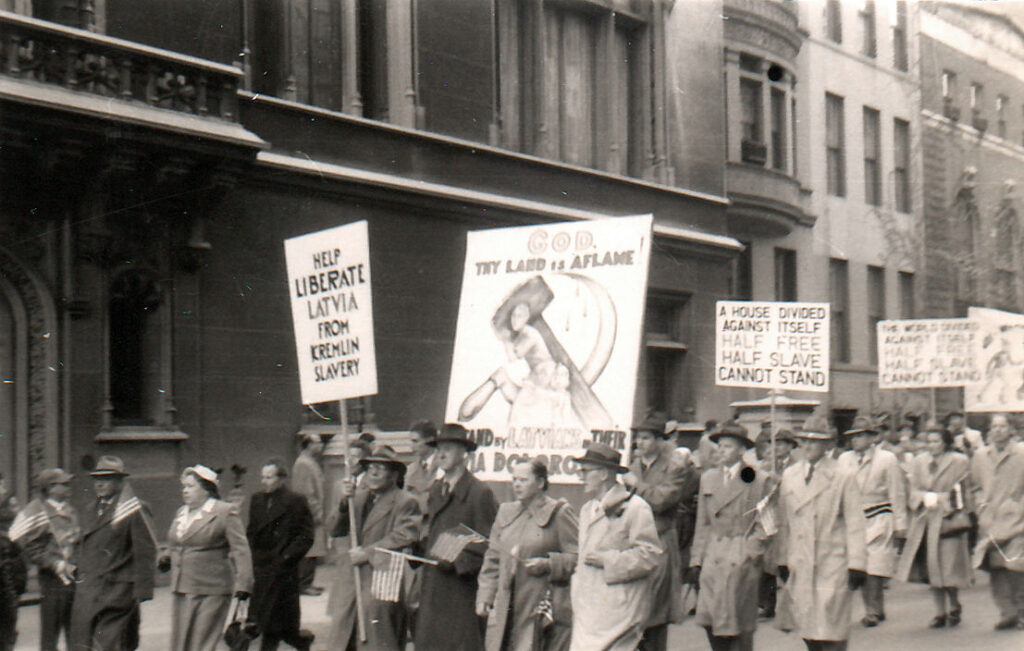
Donated to Latvians Abroad Museum and Research Centre by Māra Buks
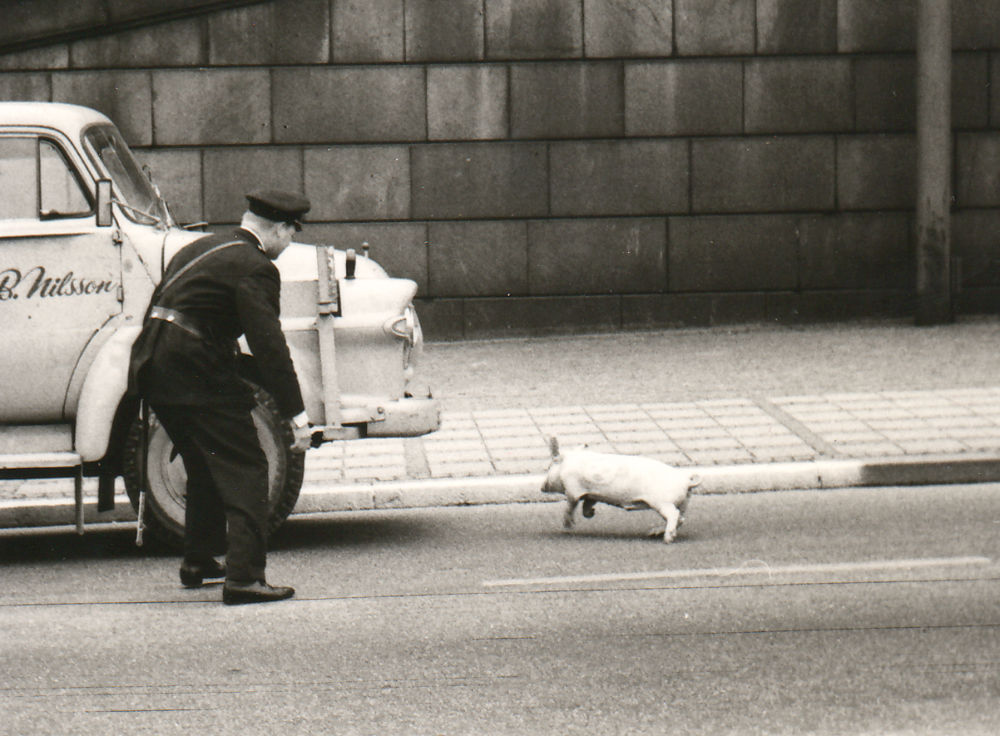
Donated to Latvians Abroad Museum and Research Centre. Gift of the author.
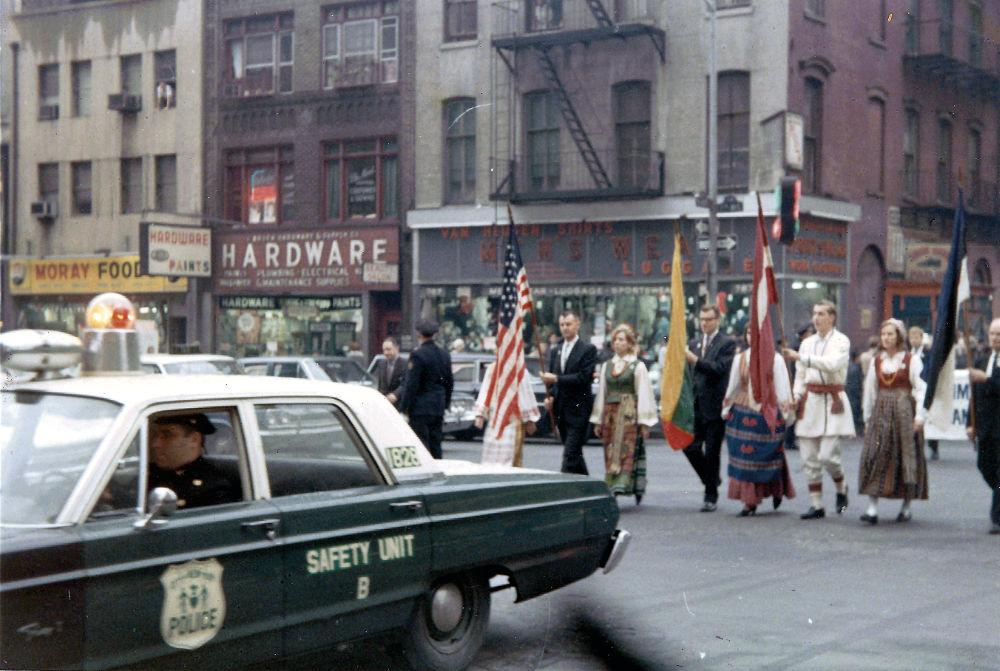
Donated to Latvians Abroad Museum and Research Centre by Knuts un Baiba Ozols.
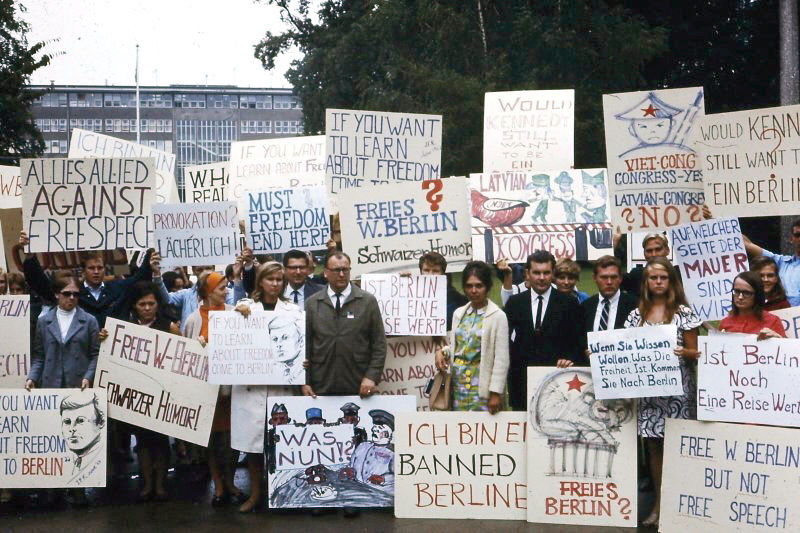
Latvian youth from the US and Canada protest the ban of the 1st World Latvian Youth Congress at the US embassy in Bonn, Germany, 1 August 1968. Photo: Valdis Daiga
Donated to Latvians Abroad Museum and Research Centre by Valda Daiga.
DEMONSTRATIONS AND PROTESTS IN THE 1970s-1980s
Soviet and US relations improved; several cooperation agreements were concluded.
1972 – Preparations were under way for the European Security and Cooperation Council (ESCC) conference.
The main interest of the Soviet Union was to gain the West’s acceptance of the borders established in Europe after WWII. This concerned exiles as it posed a serious threat to the policy of non-recognition of the incorporation of the Baltic states into the USSR.
The exile community placed an emphasis on participation in ESCC conferences and purposeful activities to maintain the US policy of non-recognition of the incorporation of the Baltic states.
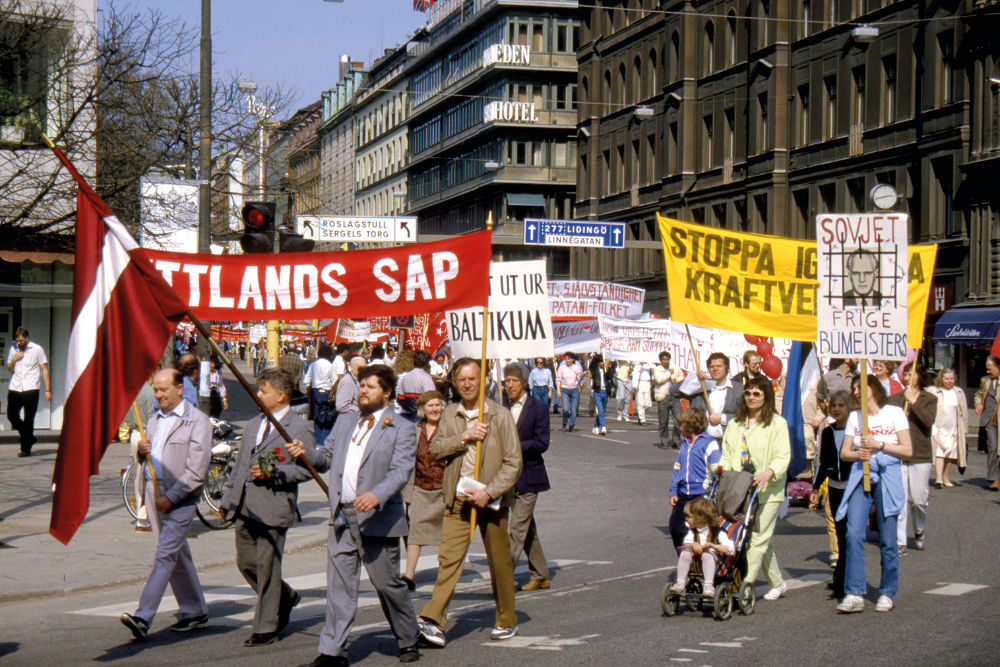
Donated to Latvians Abroad Museum and Research Centre by Atis Lejiņš
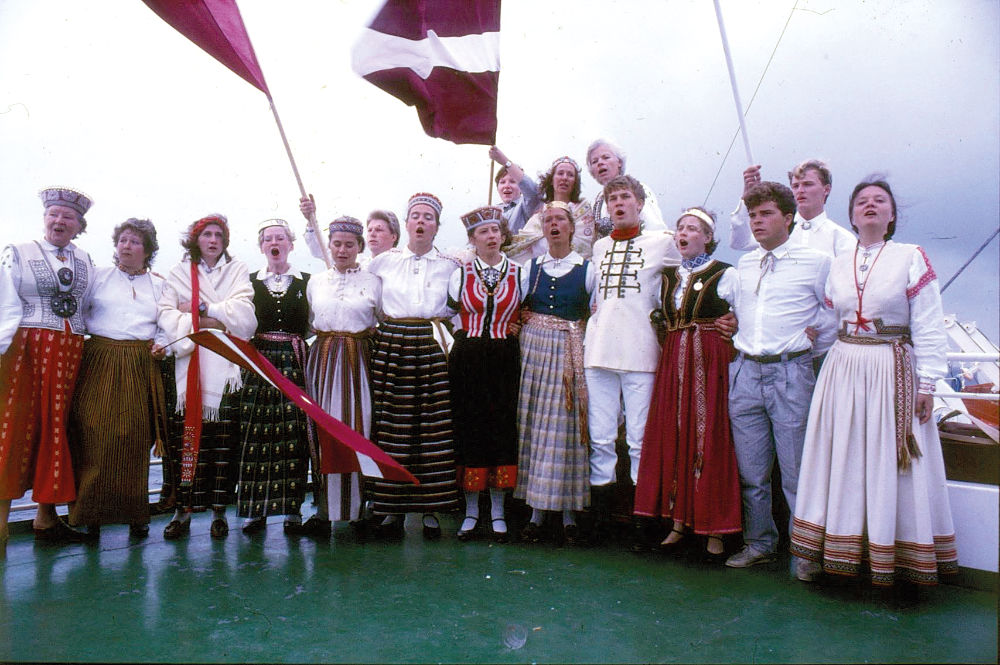
Latvian youth on board the Baltic Peace and Freedom Cruise, summer 1985 Photo: Nīls Ebdens
Donated to Latvians Abroad Museum and Research Centre by Nīls Ebdens
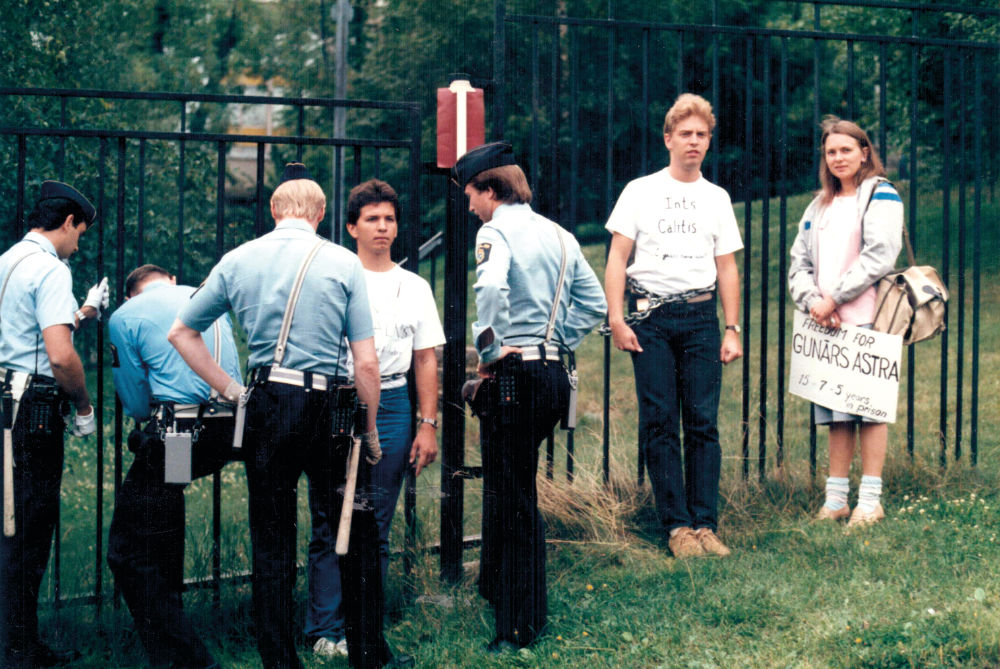
Donated to Latvians Abroad Museum and Research Centre by Pēteris Elferts
DEMONSTRATIONS AND PROTESTS DURING THE NATIONAL AWAKENING
Ideology and politics changed in the USSR in the second half of the 1980s. Mikhail Gorbachev’s glasnost and perestroika quickly gained support in the Baltics, and several informal organisations criticising the ruling Soviet regime were created. The National Awakening began in the Baltics.
Cooperation developed between the largest exile organisations and informal nationalist organisations in Latvia such as the Popular Front and the Latvian Independence Movement.
The Latvian exile community was widely involved in the processes of restoring independence by providing direct assistance (e.g., financial resources, computer equipment practically inaccessible in the USSR) and ensuring the flow of information and establishing diplomatic relations between Latvia and the West.
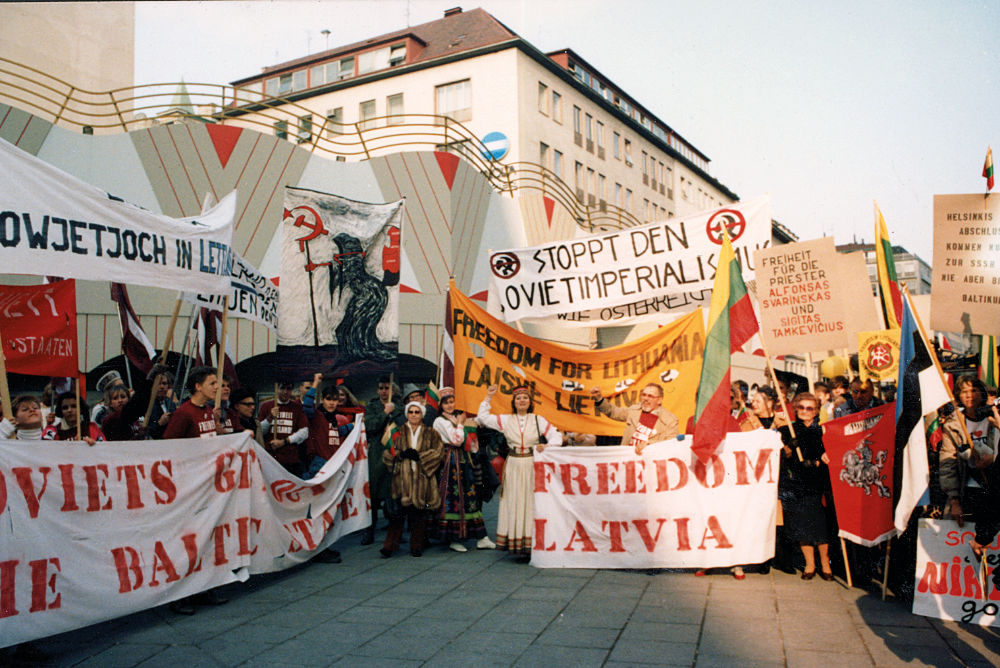
Baltic protestors at the ESCC Conference in Vienna, Austria, November 1986 Photo: Linda Freimanis
Donated to Latvians Abroad Museum and Research Centre by Linda Freimanis
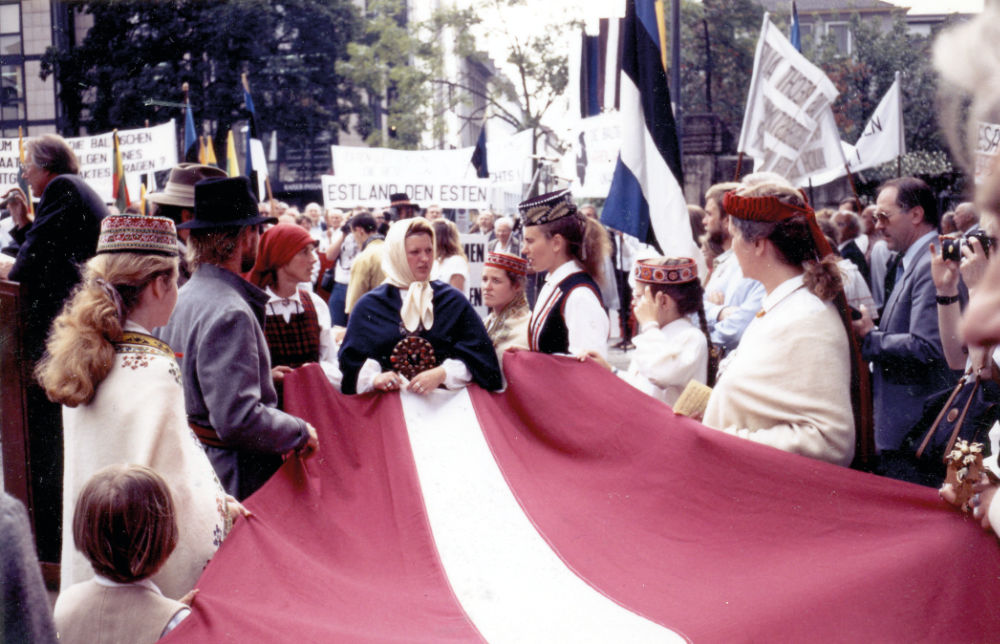
Donated to Latvians Abroad Museum and Research Centre by Ģirts Zēgners
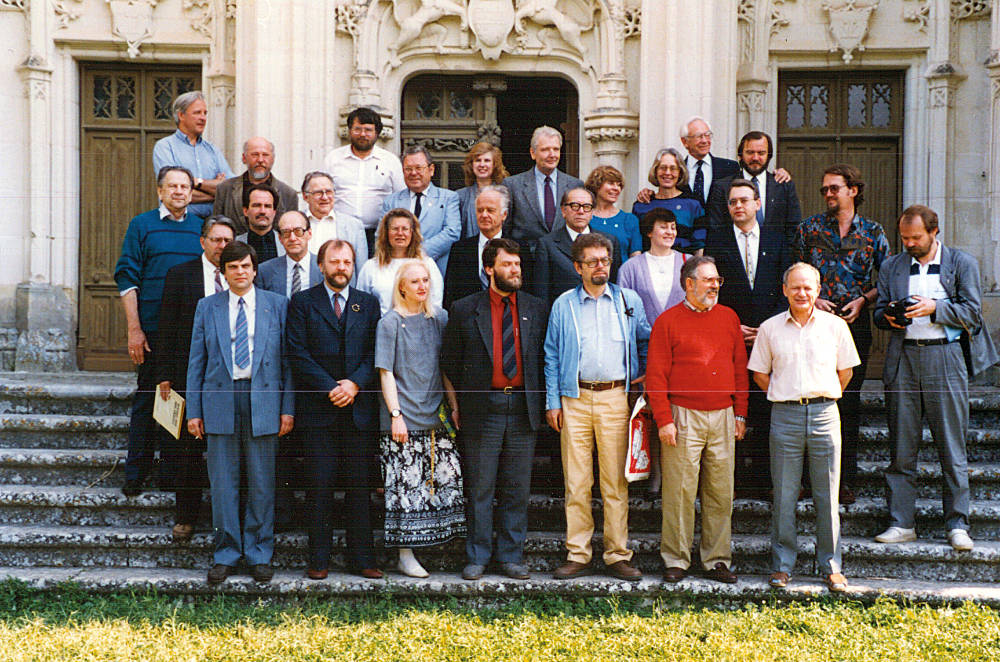
Donated to Latvians Abroad Museum and Research Centre by Ansis Reinhards
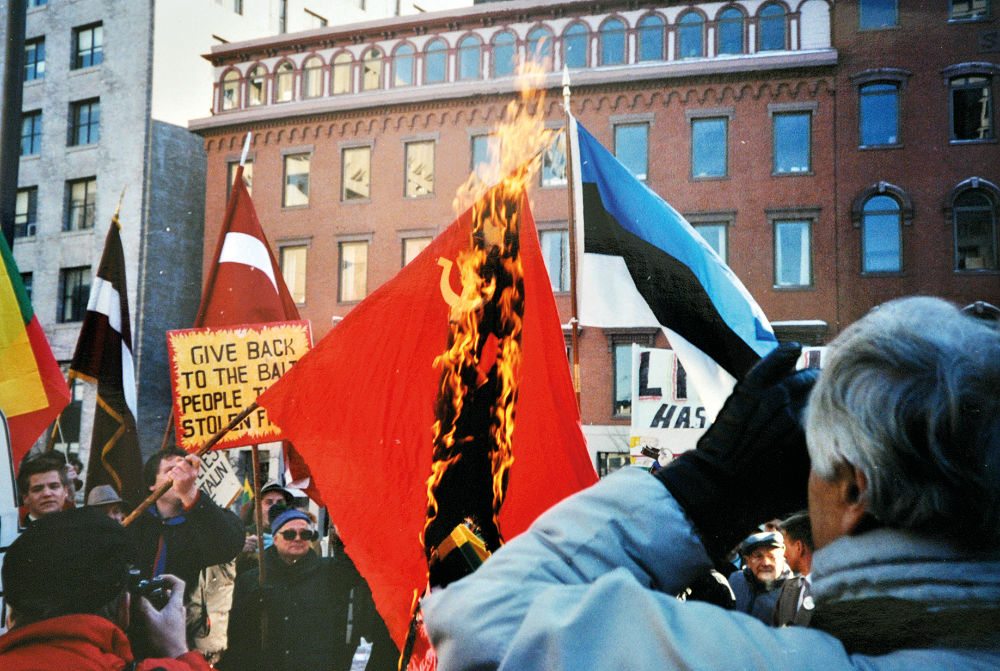
Donated to Latvians Abroad Museum and Research Centre by Austra Veidiņa
